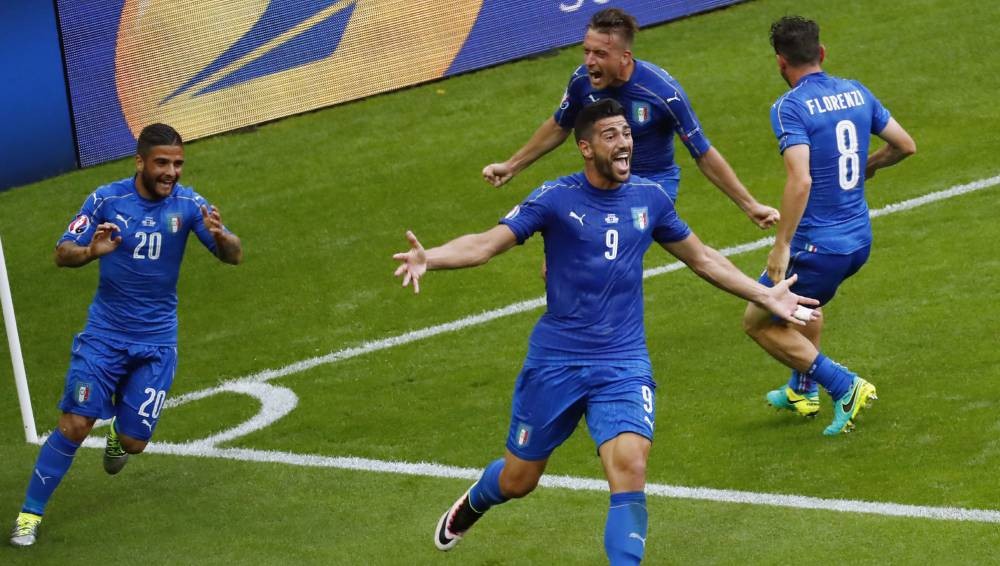Italy took on Spain in the Round of 16 of the European Championship in what was a repeat of the final 4 years ago. On July 1, 2012 Spain had romped to the title after thumping Italy 4-0. This time though, the script played out differently as Italy convincingly managed to avenge the defeat of that grueling night in Kiev.
La Roja could not cope with future Chelsea manager Antonio Conte’s aggressive 3-5-2 system throughout the match. Not knowing when to press and whom to cover, the Spanish outfit were picked off at will as the Italians created a number of chances in the first half, while restricting their opponents to a solitary shot on goal. Having seen the Italians deliver a similar performance against Belgium on the opening day, it was fairly surprising to see Spain completely taken aback and lacking answers to the questions posed to them by a well-drilled and astute Italian team.
Vicente del Bosque kept faith in the same starting XI that had lost the last group game against Croatia.
For Italy, the most notable absentee was Antonio Candreva who could not recover in time for the game. Alessandro Florenzi started in his place while de Sciglio retained his place at left wing-back.
Lack of space
Spain were expected to move the ball around at will while the Italians waited deep inside their own half only to attack on the counter when the opportunity came knocking. But, Antonio Conte managed to combine old-fashioned Italian defending with modern day pressing.
Contrary to the Spaniards, Conte’s men were completely prepared and understood how to approach the game. They shuttled from side to side in tandem and denied space for Spain’s diminutive midfielders to operate in. Iniesta and Fabregas were expertly crowded out in the middle of the park by De Rossi, Giacherrini and Parolo. When they attempted to play the ball backwards, Pelle and Eder were there to cut off the passing options to the defenders.
Pelle was especially important in minimizing the impact Busquets had on the game, as the Barca midfielder ended the first half with a meagre 16 passes. The Italian wing-backs stopped Juanfran and Alba from attacking down the flanks. The forwards, Nolito, Morata and Silva had to deal with Italy’s three colossal centre-backs. Italy did not have an extra man in midfield or defence, it was just that every blade of grass covered by an Italian was carefully and meticulously planned.
The breakdown of a Spanish move rarely ended with a wild clearance, especially in the first half. The interceptions were always followed by a well-engineered attack of their own. Giaccherini and Parolo would burst forward within the blink of an eye to join Pelle and Eder up front, flanked on either side by Florenzo and de Sciglio.De Rossi and the three centre-backs would stay back to thwart any Spanish attack.
The forward bursts were more frequent on Italy’s left where Giaccherini was present. When the Spanish centre-backs had the ball, the Italian midfielder positioned himself ahead of Fabregas, allowing de Sciglio to deal with Juanfran and Chiellini with Silva. Any interception would then allow Giaccherini to be further up than any of the other Spanish midfielders creating an attacking overload.
Pressing without cohesion
While the Italians looked like they had every move orchestrated, Spain lacked harmony and were pressing without any cohesion or compactness. When Nolito, Morata and Silva pressed against the three Italian centre-backs, there was never a Spanish midfielder backing it up. This left a large gap in midfield which allowed de Rossi or one of the full-backs to get the ball and move forward. Allowed to move the ball around with ease, the chances were coming thick and fast for Italy and if not for de Gea, they would have gone three or four-nil up by half time. At the end of the first half, the masters of the tiki-taka had made just four more passes than Italy.
Spain’s change of shape
Spain, searching for answers and lacking any joy out wide, replaced the ineffective Nolito for Aduriz. There was also a slight shift in shape with Silva now operating as a central attacking midfielder. This gave La Roja a greater presence in the middle of the park, allowing them to put together a few passes. With Silva, Fabregas and Iniesta now working close together, Spain looked relatively stronger on the offensive and conjured up few shots at goal within the opening minutes of the second half.
However, this did not stop the attacking bursts from Italy and Eder should have doubled his side’s advantage when he found himself in a one-on-one situation with de Gea. The change of shape coupled with tired Italian legs finally put Spain in control as they came close to scoring on some occasions only to be undone by a Pelle goal (who was exceptional on the night) in the dying minutes of the game.
Conclusion
This was always going to be a difficult night for the Spanish. However, it was the manner in which they went about their business that raised eyebrows. Italy covered more ground and ran with purpose as Pelle, Giacherrini and de Sciglio put in tremendous shifts on the field of play. Spain changed their shape, but the Italian defence of BBC (Barzagli, Bonucci and Chiellini) stood strong. Their stock is on the rise as they march on to face Germany in the quarter finals. Spain and Vicente del Bosque’s tiki-taka dynasty maybe coming to an end, as it hasn’t worked for them in the last two major tournaments.
